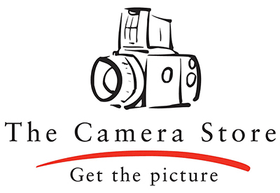Aurora Alert! With solar activity increasing as the winter approaches, so does the potential to produce northern lights. The aurora is one of the most enchanting natural phenomena on our big blue planet, not to mention a bucket list shot for many photographers. Here are my top tips for creating drool-worthy aurora images.
Let There Be Light
One of the biggest challenges with creating compelling images at night is achieving a bright enough exposure so that darker elements of the landscape do not appear as a black hole. One of the ways we can work around that problem is to take multiple exposures (shorter exposures for the sky to avoid star trails, and longer exposures for the landscape to allow more light onto the sensor) and then combine them in post.

Another solution to the black hole problem is to use elements of the landscape to reflect the small amount of light we do have. With the fresh snow falling in the mountains, and lakes not yet frozen, conditions could not be better for capturing stunning images of the aurora over snowy peaks. The snow, and open bodies of water will reflect the light from the aurora, allowing you to capture more light.
People often worry that moonlight will ruin a night shot but do not let moonlight deter you; some of my all-time favourite images were shot near full moon, including my favourite aurora shot!

Composition
The first time I ever saw the northern lights with a camera in my hand, I was so mesmerized that all I could think to do was point the camera at the sky and try to capture the feeling of that moment. With time and experience I eventually learned that the most compelling photos I have ever taken of the Aurora would have been equally compelling with a dramatic sunrise, or a Milky Way in the frame.
When you think about it, the elements that create a compelling composition during the day do not change when the sun goes down. Your image will be most powerful with a strong subject, an interesting foreground, and roughly one third of your image devoted to the sky. If you think about your image divided into six equal parts, each part of the image should help you tell part of the story. Keep in mind that the most compelling night shot is not necessarily the one with the most sky!

Location, location, location!
Alberta is in the upper middle latitudes; this is a region extending from 23°26’22” to 66°33’39”. As a point of reference, Calgary is located at 51°04’47”, Jasper is 52°87’37” and Reykjavik is 64°14’66”. For photo nerds this means finding North facing locations, because the auroral oval tends to hug the arctic circle. When aurora activity is strong, the auroral oval extends down over the middle latitudes allowing us to see the aurora in any direction.

Another interesting thing for locals to consider is that when aurora activity is weak, it often appears as dancing pillars of light in the mountains, and unfurling ribbons of green on the prairies. As the strength of the solar activity increases, we will see the dancing ribbons in mountain regions as well.
There are a few North facing locations in the mountains that offer beautiful compositions to work with, including Lake Minnewanka in Banff, Castle mountain in Lake Louise, Emerald Lake Lodge in Field, Sunwapta Falls on the Icefields Parkway, and Pyramid Island in Jasper.

Other Resources
If you are interested in learning more about photographing the aurora, check out my Great Aurora Chase photography workshop! https://www.astralisphotography.com/downloads/the-great-aurora-chase/> You can join me for a full week or aurora chasing, or just a single night if that better fits your schedule.
You can also join the Alberta Aurora Chasers group on Facebook. There are many knowledgeable individuals in that group who can help you to better understand how to predict the aurora and where to shoot when the aurora starts dancing.
Good luck this season and have fun!



